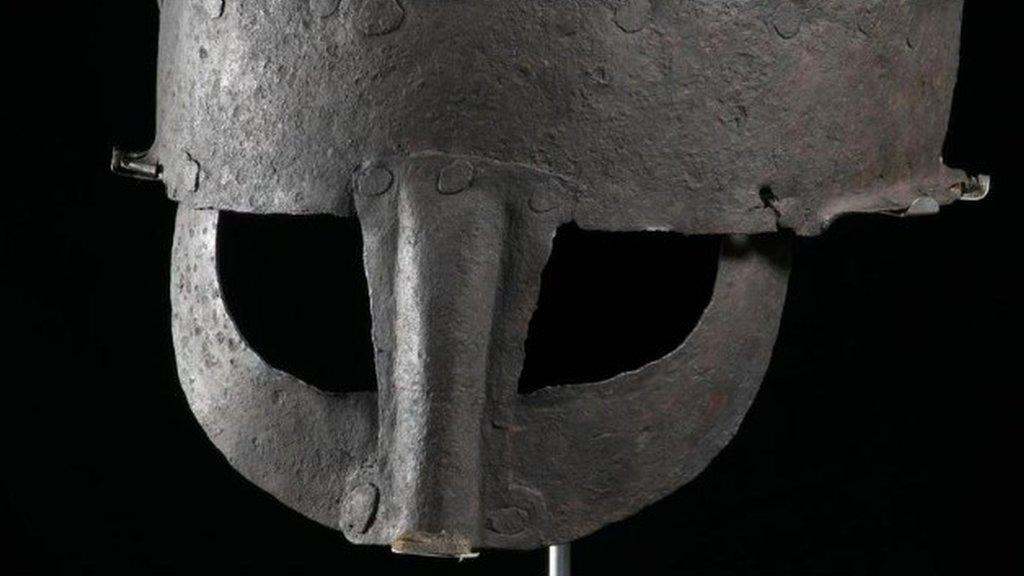Viking relatives to be 'reunited' as skeletons
- Published

Rane Willerslev (left) and Angie Bolton believe the discovery will shatter myths about the Vikings
Two Vikings from the same family are to be "reunited" more than 1,000 years after they died.
DNA evidence has linked the skeleton of a victim of Oxford's St Brice's Day Massacre with another skeleton excavated in Denmark.
The Danish relative is believed to be an uncle, nephew, grandfather, grandson, or half-brother.
Both skeletons will be included in an upcoming Viking exhibition at the National Museum of Denmark.
The Oxford skeleton, known as SK1756, is one of 35 men and boys killed in the massacre in AD 1,002.
It is currently held at Oxfordshire County Council's Museum Resource Centre in Standlake.
The Saxon king Ethelred the Unready ordered "a most just extermination" of all the Danes in England following a resurgence in Viking raids.
The mass grave was discovered in 2008 at St John's College at the University of Oxford.
'Payback'
Dr Rane Willerslev, director of the National Museum of Denmark, said the link between the two skeletons was "very revealing".
He said: "It was strange to see this skeleton - one of your ancestors - which had been hit eight to 10 times in the head and stabbed several times in the spine, just lying there in front of you."
He added: "We thought that Vikings had left Denmark to live in Britain, but we were not certain. Now we had the evidence that they were kin."
Dr Willerslev said while "people always think the Vikings went overseas and killed and plundered" on this occasion it was "payback".
Angie Bolton, Oxfordshire's curator of archaeology, called the DNA link "amazing" and said "it's quite a privilege for our collection to be recognised in this way".
SK1756 will be moved to Copenhagen in the spring.
- Published9 August 2020

- Published12 August 2011
